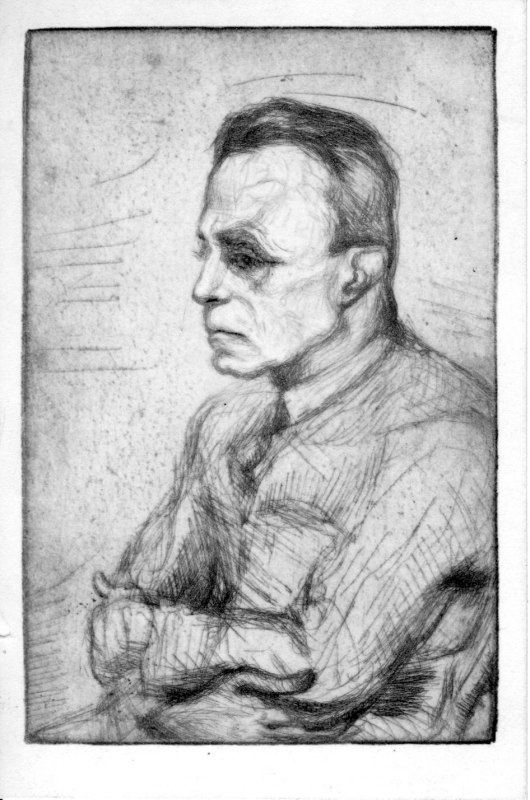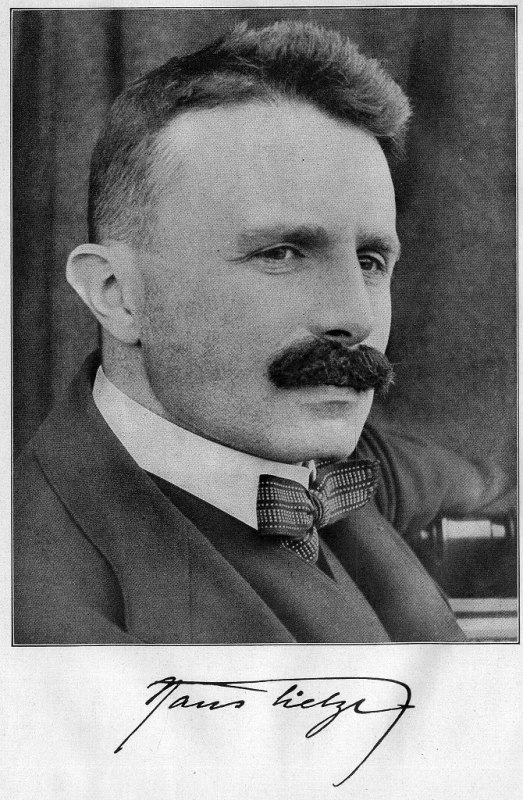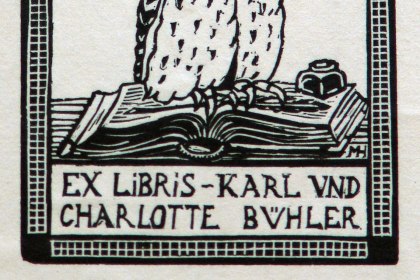Hans Tietze, Prof. Dr.
Honors
| Ehrung | Titel | Datierung | Fakultät | |
|---|---|---|---|---|
| Monument for Art Historians | 2008/09 | Faculty of Historical and Cultural Studies |
|
|
| Gate of Remembrance | 10.11.2023 | Faculty of Historical and Cultural Studies |
In November 2023, as part of the redesign of the "Gates of Remembrance", the Senate of the University of Vienna decided to honor Hans Tietze for his academic achievements in the field of art history, monument preservation and museum reorganization and his wife Erica Tietze-Conrat for her achievements in the field of art history by naming this "Gate of Remembrance" after both of them. |
- Art History
- Faculty of Philosophy
Hans TIETZE, born on March 1, 1880 in Prague, died on April 13, 1954 in New York/USA, was a private lecturer (ao. Prof.) for art history (medieval and modern art history) at the Faculty of Philosophy of the University of Vienna.
Hans Tietze, son of a lawyer in Prague, attended grammar school in Prague and then in Vienna (Schottengymnasium) and learned English, French, Italian, Latin and Greek as well as German. He began studying law at the University of Vienna in 1898, but switched to art history and history as early as 1899, doing his military service as a one-year volunteer at the same time. He then completed the course at the Austrian Institute for Historical Research in 1901-03 alongside his art history studies and obtained his doctorate in philosophy on June 16, 1903.
After two years at the Austrian Institute in Rome, he was recruited by his teacher, Professor Franz Wickhoff, as an assistant at the Institute of Art History at the University of Vienna in 1905. In the same year, he married the art historian Erika Conrat, who became a very important collaborator in his extensive work (but only appeared as such in their increasingly frequent joint works from 1928 onwards). In 1906, he moved to the "Kunsthistorische Institut der k.k.. Central Commission for Art and Historical Monuments" (later the Federal Monuments Office, but at that time still without official status) and was entrusted with the publication of the comprehensive Austrian Art Topography, which he published from 1907. In 1908, he habilitated in medieval and modern art history at the University of Vienna and from 1911, as art editor of the "Fremdenblatt", publicly advocated modern art. During the First World War, he initially taught at the Reserve Officers' School in the Arsenal in Vienna and was transferred to the front in Italy in the fall of 1917 as an art protection officer to recover Italian art treasures.
After the transition from a monarchy to a republic, he drew attention in a memorandum from the State Monuments Office to the dangers of the expected foreign claims to Austrian art holdings and was subsequently entrusted by the State Secretary for Education, Raphael Pacher, in November 1918 with the preparation of the "defense" of state art holdings against foreign claims and was assigned to the State Office (later Ministry) for the Interior and Education. There he was initially entrusted with the management of the art and museum department. He was also appointed as a ministry representative by the Under-Secretary of State for Education, Otto Glöckel, to the Museum Commission, which was founded in October 1919 to carry out the museum reorganization. Also in October 1919, he was awarded the title of Associate Professor by the University of Vienna, the degree of his academic career, which - apart from two brief appointments - he would never hold. In 1918/19, he took over the editorship of the Viennese yearbook "Die bildenden Künste", in which modern artists were presented and discussed, founded the "Gesellschaft zur Förderung der modernen Kunst" in 1921 and organized numerous art education exhibitions on modern art (1925: "Das Gesicht der Zeit. Graphische Arbeiten zweier Generationen" at the Vienna Künstlerhaus, 1927: "Das Werden eines Kunstwerks" at the Austrian Museum of Art and Industry, finally in 1930: "Kunst in unserer Zeit" again at the Künstlerhaus). However, his main task between 1919 and 1925 remained the reorganization of the museum. Important milestones in this process: 1920/21 new creation of the "Staatliche Graphische Sammlung Albertina", 1923 foundation and opening of the "Österreichisches Barockmuseum" in the Lower Belvedere, 1924 foundation and opening of the "Galerie des XIX. Jahrhunderts" in the Upper Belvedere. Due to massive resistance to the reorganization programme, he allowed himself to be "dismantled" - retired - at the end of 1925 and left the civil service.
He then concentrated more on research and teaching, published numerous works on art history as well as several books on Vienna and continued to teach art history regularly at the University of Vienna (until the winter semester 1936/7). From 1932, he made several research trips to America, which was also to become his exile after Hitler's invasion.
Emigration
At the time of the Anschluss, Hans and Erica Tietze were on a research trip to France and Italy and never returned to Austria. In 1938/39, Tietze received a visiting professorship in Toledo/USA, worked at the museum there and was occasionally called upon as an expert at the Metropolitan Museum in New York and the National Gallery in Washington. Shortly before his death in 1954, he stood in for a visiting professor at Columbia University in New York who had been absent at short notice. He returned to Europe in the summer of 1946, but initially only traveled to Sweden and England, then to France, Italy and Turkey the following year - and briefly visited Vienna in September 1947. Overall, neither Hans Tietze's qualifications as an internationally recognized museum expert nor as a university lecturer in exile - he had been an American citizen since 1944 - were utilized accordingly. Nevertheless, until his death on April 11, 1954, he developed an incredibly diverse research and publication activity.
In keeping with the dominant zeitgeist of the early II. In accordance with the dominant zeitgeist of the early Second Republic, not only was there no invitation to return to Austria after 1945, but Tietze's 1953 application for payment of his civil servant's pension - discontinued by the National Socialists in 1939 - was not decided until his death. Instead, there are journalistic tributes to his 70th birthday in 1950, as well as - posthumously - numerous necrologies in 1954/5 honoring his services to the Austrian museum, art and science landscape.
Honors
In 1965, an alley in Vienna 22 was named after him, and in 2004 an International Hans Tietze and Erica Tietze-Conrat Society was founded in Vienna in order to preserve their oeuvre.
As part of the Nazi provenance research begun in 2004, several books owned by Hans Tietze were found in the holdings of the Vienna University Library. In 2009, they were restituted to the heirs, who kept one volume as a symbolic memento and donated all the other books to the University of Vienna.
His name was also entered in the Memorial Book for the Victims of National Socialism at the University of Vienna in 1938.
His name and that of his wife can also be found on the memorial to the marginalized, emigrated and murdered of the Institute of Art History of the University of Vienna on the campus of the University of Vienna, court 9, which was opened in 2008.
A partial estate is accessible in the Vienna City Library since 2014. In 2015, a memorial plaque was unveiled at his former home in Vienna 19 and the newly built print rooms of the Albertina Collection of Prints and Drawings were named after the Tietze couple ("Tietze Galleries for Prints and Drawings").
As part of the redesign of the "Gates of Remembrance" in 2023/24, it was decided in November 2023 to name the gate between court 3 and court 13 Tietze Gate after him and his wife.
Archive of the University of Vienna, Rectorate GZ 677 ex 1937/38, Senat S 304.1284.
Zuletzt aktualisiert am 03/01/24





